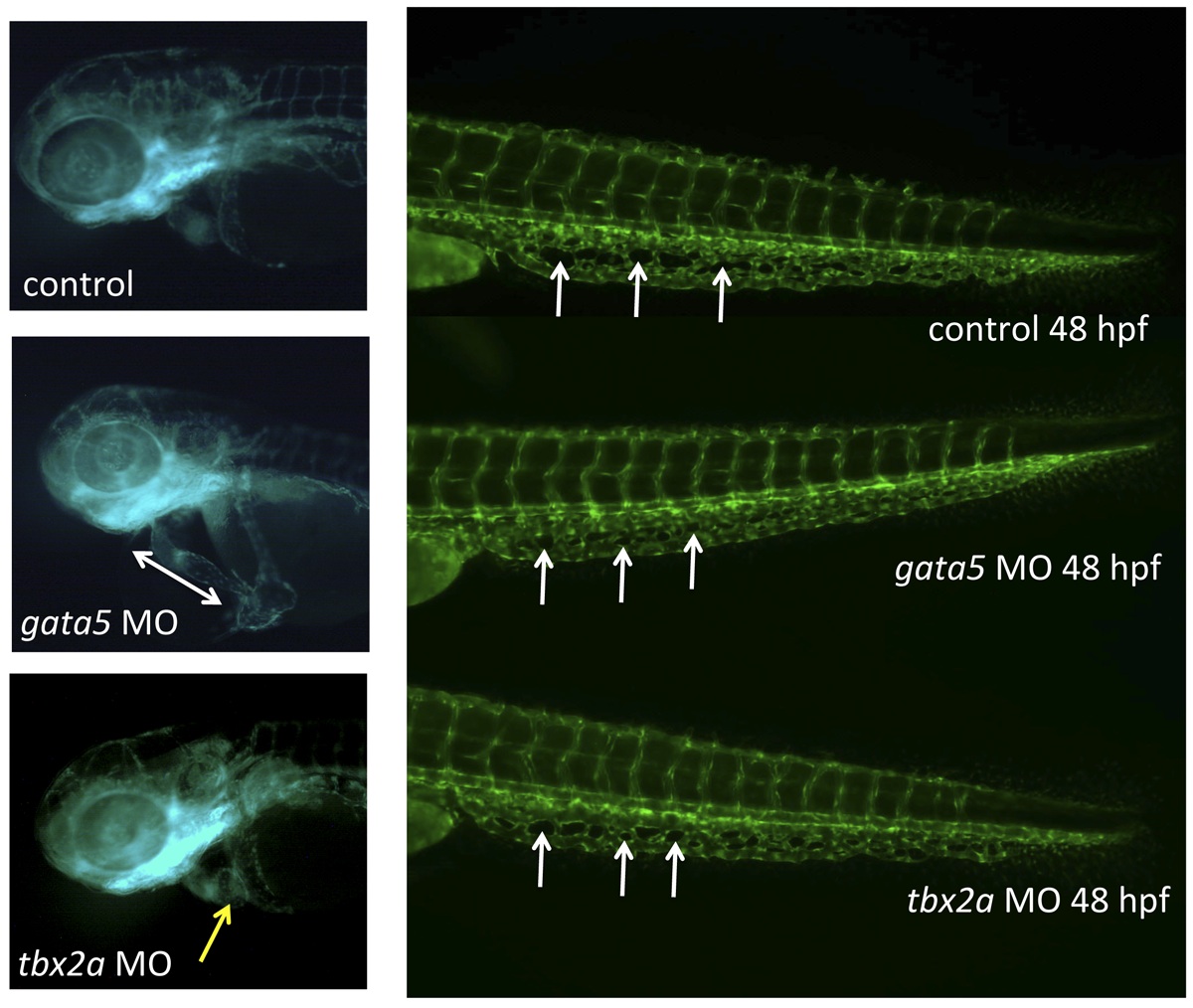Fig. s1 The CHT defect caused by depletion of Gata4 is not seen in other models of embryonic cardiomyopathy. The heart and caudal tail regions are shown in representative 48 hpf tg(gata1:dsred; fli1:egfp) uninjected control embryo (top), or embryos that had been injected with morpholinos targeting gata5 (middle) or tbx2a (bottom). In the trunk images, white arrows indicate examples of characteristic fenestrated structures that start to form around 32 hpf in the CHT plexus, but fail to do so in the gata4 morphant. The control embryo has a normally looped heart, while the gata5 morphant has an unlooped heart-string (indicated by the double-headed arrow), and the tbx2a morphant has an extended dysmorphic atrium (indicated by the yellow arrow). Morpholinos were used under conditions that generate reproducible cardiomyopathies and poor circulation with pericardial edema, as documented in our own and others studies: gata5, 52-AAGATAAAGCCAGGCTCGAATACAT, 10 ng/embryo; tbx2a,52-CGGTGCATCCAACAAACGTAGTGAA, 5 ng/embryo.
Image
Figure Caption
Acknowledgments
This image is the copyrighted work of the attributed author or publisher, and
ZFIN has permission only to display this image to its users.
Additional permissions should be obtained from the applicable author or publisher of the image.
Full text @ PLoS One

